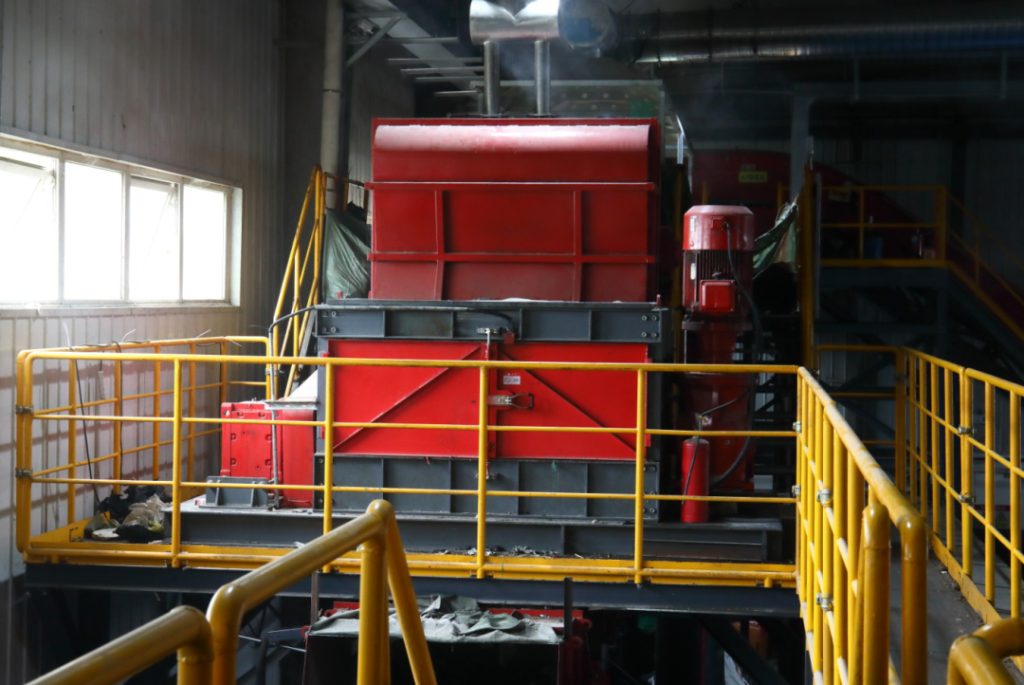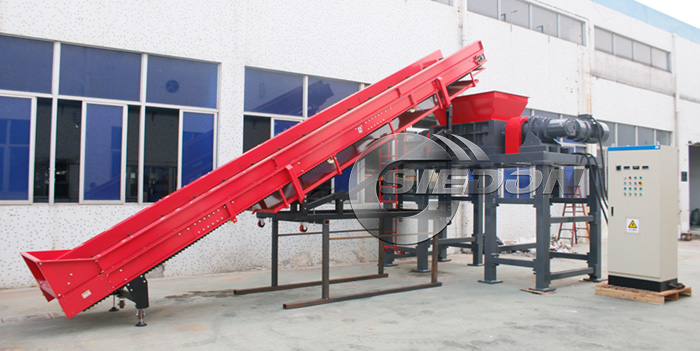With the rapid acceleration of industrialization and urbanization, the volume of solid waste continues to grow at an unprecedented rate. The question of how to manage solid waste in a scientific, efficient, and environmentally friendly way has become an urgent global challenge. To achieve the goals of reducing, recycling, and safely disposing of solid waste, specialized waste management processes have been developed. These involve collection, sorting, transportation, preprocessing, and subsequent recycling or final disposal. Among these steps, mechanical equipment plays a critical role, with the twin-shaft shredder emerging as a standout solution for preprocessing due to its unique features.

Applications of the Twin-Shaft Shredder
1. Industrial Solid Waste to RDF Fuel
In industrial waste management, materials like leather scraps, waste textiles, and other industrial refuse can be processed by the twin-shaft shredder. After shredding and screening, these materials are converted into high-calorific-value Refuse-Derived Fuel (RDF), which can replace traditional fossil fuels like coal.
2. Plastic Recycling
Discarded plastic items such as pipes, films, barrels, and pallets can be shredded into appropriately sized particles or fragments. These materials can then be used to produce recycled plastics, which are molded into new plastic products.
3. Bulky Waste Management
Large waste items, including discarded wood, furniture, and offcuts, can be shredded and repurposed into biomass pellets, paper-making raw materials, or composite board materials.
4. Household Waste Processing
Bulky household waste items, such as sofas and mattresses, that are challenging to manage directly can undergo shredding as a preprocessing step. This enables smoother handling in subsequent processes like incineration, landfilling, or recycling.

Key Features of the Twin-Shaft Shredder
1. High Reduction Ratio
The advanced cutter roller design and precise arrangement of blades in the twin-shaft shredder provide a significant reduction ratio. Large solid waste items, such as oversized furniture, can be shredded into fragments as small as a few centimeters, meeting the particle size requirements for downstream processes like sorting and recycling.
2. Versatile Adaptability
The shredder’s versatility stems from its ability to accommodate different blade shapes, materials, and sizes tailored to various types of solid waste. For instance:
- High-strength alloy steel blades can handle hard, bulky waste.
- Specially designed blades are effective for soft yet tough materials like plastic films.
This adaptability ensures effective shredding of diverse waste types, from construction debris to fibrous materials in household trash.
3. High Efficiency and Stability
The twin-shaft shredder employs a synchronized dual-rotor system that works in tandem to grab, tear, and shred waste materials continuously. Its scientific structure, coupled with high-quality transmission systems, sturdy frames, and reliable bearings, ensures stable performance even under prolonged high-intensity operation. This minimizes downtime, reduces maintenance costs, and extends the machine’s lifespan.
4. Low Noise and Dust Emissions
The shredder’s well-sealed design and optimized cutting and material handling mechanisms result in relatively low operational noise, meeting environmental standards for workplace conditions. For dust-prone materials, such as dry construction waste or powdered industrial residue, the internal structure and feed/discharge systems effectively suppress dust dispersion, protecting both operators and the surrounding environment.
Conclusion
In the context of professional solid waste management, the twin-shaft shredder stands out for its broad range of applications, distinctive shredding capabilities, and remarkable processing outcomes. By enabling the scientific treatment and recycling of solid waste, it plays a crucial role in achieving sustainable resource utilization. As technology continues to evolve, the twin-shaft shredder is poised to deliver even greater performance, cementing its indispensable position in the future of solid waste management.
